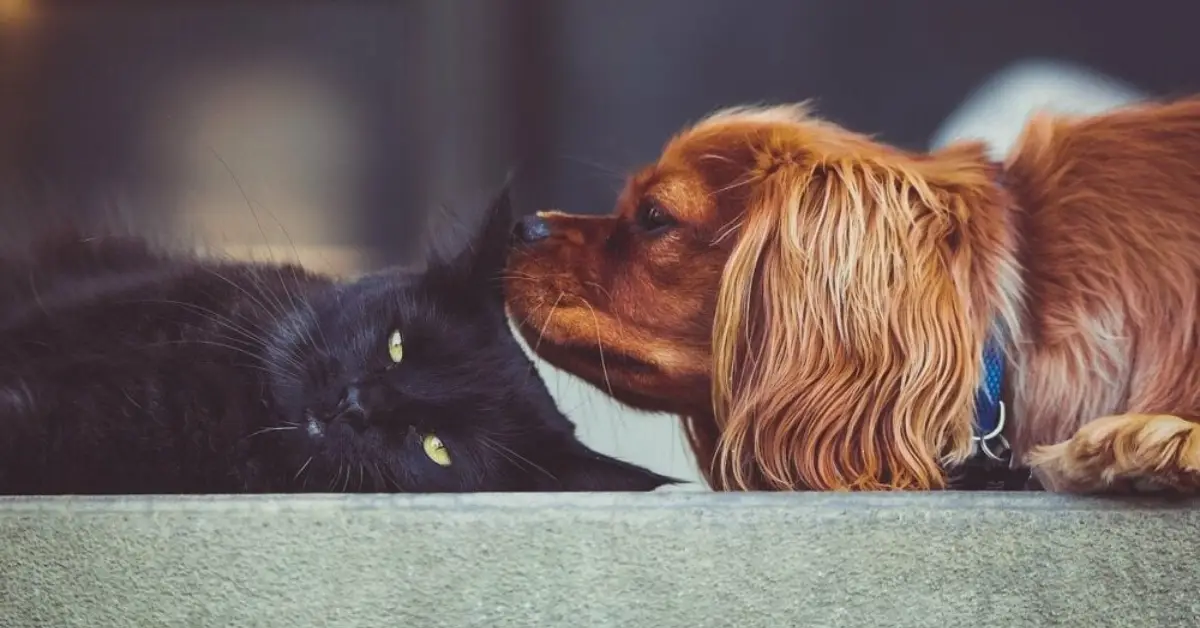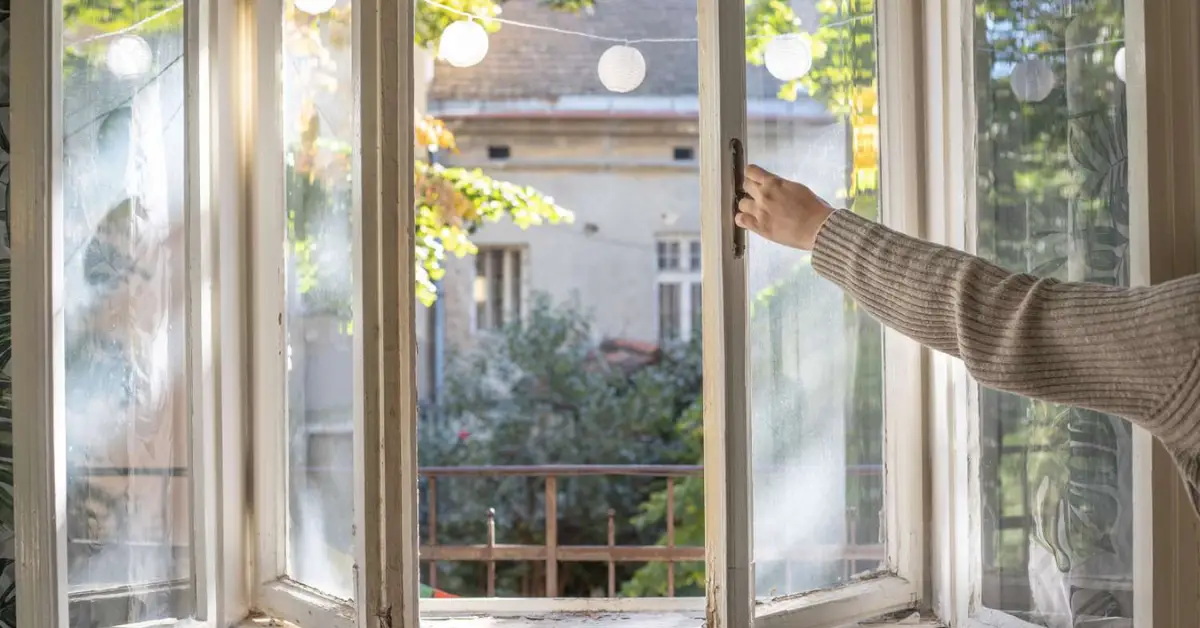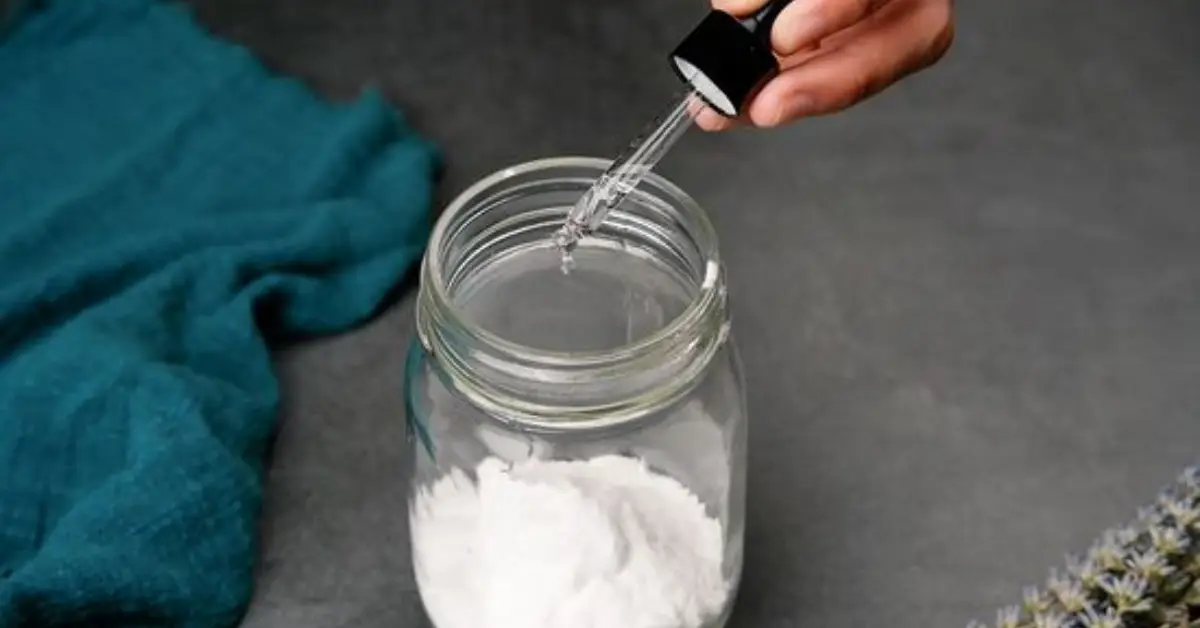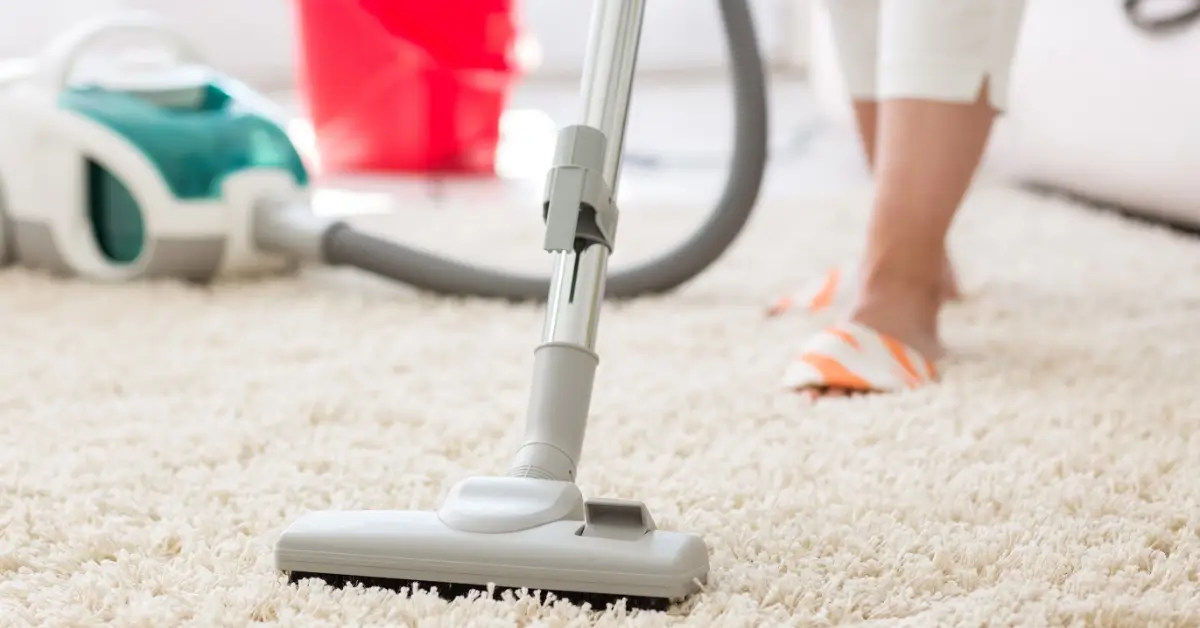7 Quick Fixes to Get Rid of Pet Smells Before They Take Over Your Home
I’ve lived with pets my whole life — two dogs, one very opinionated cat, and a house that never quite smelled as clean as it looked. You know that faint, lived-in pet scent that clings to the sofa no matter how much you vacuum? I tried every store-bought spray and “miracle” deodoriser, and all they did was mask the smell for a day before it came back stronger.
What finally worked wasn’t another chemical cleaner — it was a handful of simple, natural habits that changed how I clean, not how often I clean. Once I understood where those smells were really coming from — the fabrics, the dander, the air itself — everything shifted. My home stopped smelling like “dog and cat” and started smelling like… well, home.
If you’re tired of your house giving away the fact that you have pets the moment someone walks in, these next few tricks are for you. They’re safe, proven, and most importantly, they actually work long-term.
Before we get into the seven natural fixes, let’s start with the part most people skip — why your home smells like your pet in the first place.
Why your home smells like your pet (and why chemicals aren’t the answer)
I used to think pet odours were just part of having animals — something you tolerate for the love they bring. But the truth is, the smell isn’t really your pet’s fault; it’s how your home holds on to the traces they leave behind. Once you understand where those odours come from and why most sprays don’t fix them, you’ll know exactly how to make your home smell fresh again.
Common sources of pet odour
Even if you clean daily, there are a few sneaky spots where smells start and spread:
- Fur and dander: Tiny hair and skin flakes get trapped in carpets, curtains, and air filters.
- Saliva and drool: When pets lick themselves, beds, or toys, bacteria grow — and that’s what you smell days later.
- Accidents or marking: Even one unnoticed urine spot can cling to floorboards or fabric padding for months.
- Litter boxes and damp areas: Especially for cats, trapped ammonia and humidity make odours stronger with time.
- Soft furnishings: Couches, curtains, and rugs act like sponges for all of the above.
You don’t notice it right away because your nose gets used to it — but guests definitely can.
Why harsh chemical deodorisers often fail
I learned this the hard way: air fresheners and “pet odour eliminators” promise instant results, but most only mask the smell. They add artificial fragrance on top of the existing bacteria and residue — and within hours, the odour returns stronger once the scent fades.
Worse, many of those chemical sprays release volatile compounds that can irritate your pet’s nose and lungs. Cats, especially, are sensitive to ingredients like phenols and ammonia. What helps your living room smell clean might actually make your pets uncomfortable.
That’s why the goal isn’t to cover smells — it’s to neutralise and remove them at their source, using safe ingredients that don’t harm your pets or your air.
How dogs and cats differ in odour challenges

Dogs and cats each bring their own unique scent stories:
- Dogs have oily coats that trap odour, especially after rain or a bath. That “wet dog smell” comes from bacteria on fur reacting with moisture.
- Cats, on the other hand, are naturally cleaner but produce stronger ammonia odours from their urine and litter. If their litter box isn’t cleaned often or ventilated, the smell travels fast.
Knowing the difference helps you target the problem better — for example, deep cleaning dog fabrics more often, or improving airflow around a cat’s litter area.
Now that you know why the smell sticks around, let’s start fixing it — the natural way.
Trick 1 – Deep clean textiles with baking soda, vinegar & hot washes
When you think about it, every smell in your home has one thing in common — it’s clinging to fabric. That’s why the first step is to focus on anything your pet touches: beds, blankets, carpets, and upholstery.
Forget fancy cleaners. Baking soda and white vinegar are still the best natural duo you’ll ever use. They neutralise odours instead of covering them and are completely pet-safe when used correctly.
Laundry and removable covers
Anything that can go in the washing machine should — weekly if possible. Here’s what works best for me:
- Add half a cup of white vinegar during the rinse cycle to break down odour molecules.
- Sprinkle two tablespoons of baking soda directly into the drum before washing.
- Use hot water (if fabric allows) to kill lingering bacteria.
- Dry completely in sunlight whenever possible — UV light helps neutralise smells naturally.
Doing this regularly keeps pet bedding, blankets, and cushion covers fresh without chemicals.
Upholstery, carpets, and rugs
These are your home’s biggest odour traps. Instead of harsh carpet sprays, try this simple method (recommended by This Old House):
- Sprinkle a generous layer of baking soda over the surface.
- Let it sit for 30–60 minutes to absorb moisture and trapped smells.
- Vacuum slowly to remove the powder and residue.
- For light cleaning, mix equal parts white vinegar and water in a spray bottle and mist lightly — don’t soak. Let dry naturally.
If you’ve been noticing tiny holes or fine dust around your carpets, there’s a good chance carpet beetles are part of the problem. Here’s a detailed guide on how to get rid of carpet beetles without calling pest control that pairs perfectly with your regular cleaning routine.
It’s quick, safe, and works wonders after a long week with pets on the couch.
Fabrics you can’t wash
Not everything can go in the machine — sofas, curtains, or decorative pillows often can’t. In those cases:
- Use washable throws or slipcovers to protect surfaces your pets love most.
- Keep a spare set so you can rotate and wash them easily.
- Once a month, air out cushions in sunlight for an hour or two — it reduces both odour and bacteria naturally.
Trick 2 – Groom your pet regularly to remove the source of smell
You can scrub your floors, wash every blanket, and spray every cushion — but if your pet still smells, your house will too. Odour control starts with your pet, not your carpet. Most of the time, that familiar “dog smell” or “cat musk” is just a sign of oils, saliva, and dead skin cells building up over time. The fix? A good grooming routine that becomes as normal as feeding time.
Bathing schedule for dogs & cats – simple, realistic guidelines
You don’t need to overdo it — in fact, bathing too often can dry out your pet’s skin and make odours worse. Based on veterinary guidance, here’s what works for most homes:
- Dogs: Bathe every 4–6 weeks with a gentle, pet-safe shampoo. For active or outdoor dogs, every 2–3 weeks might help.
- Cats: Once every few months is plenty unless your cat gets into messes. Most cats handle self-cleaning well.
- Always brush before bathing to loosen dirt and shed fur.
- Rinse thoroughly — leftover shampoo residue can trap odour instead of removing it.
If you can smell your dog a few days after a bath, check their ears, paws, or bedding. Those spots often hold hidden bacteria.
Brushing, wiping paws, and cleaning ears/mouth
Even if you skip the bath, daily mini-grooming keeps odour from spreading:
- Brush once a day (especially during shedding season) to remove dander before it falls on furniture.
- Wipe paws with a damp cloth after walks — not just to remove mud but bacteria that cling to pads.
- Clean ears weekly to prevent yeast build-up (a common source of “dog smell”).
- Wipe around the mouth and chin — saliva dries and sticks to fur, causing sour odours.
These small moments take minutes but make the biggest difference in keeping your home fresh and allergen-free.
What to do if your pet is older or has special needs
Older pets, heavy-coated breeds, or those with skin issues may need a gentler approach:
- Use dry shampoo or grooming wipes between baths to avoid stressing joints or skin.
- Switch to hypoallergenic or oatmeal-based shampoos for sensitive skin.
- Keep grooming sessions short and calm — comfort matters more than perfection.
- If your vet recommends fewer baths, increase brushing and spot-cleaning instead.
Trick 3 – Air quality & ventilation: let fresh air do the work

Sometimes, the problem isn’t on your floor — it’s in your air. Pet odours hang in still spaces where hair, dander, and moisture settle. The good news? You can clear most of it out just by improving airflow.
Why circulation matters
Every pet adds invisible particles to the air — dander, fur oils, even breath moisture. Without circulation, those settle into fabrics and create that “pet house” scent. Opening windows, using ceiling fans, and airing out rooms regularly helps your home breathe again.
According to First Saturday Lime, proper air movement and natural ventilation can reduce lingering odours by up to half. It’s free, effective, and completely pet-safe.
Use of HEPA filters or air purifiers
If you live in an apartment or have poor natural airflow, consider an air purifier with a HEPA filter. It traps:
- Fine pet dander and hair
- Dust and allergens that trap odours
- Bacteria that cause musty smells
When buying one, look for activated carbon filters — they absorb pet-related odours far better than basic models. Keep it near your pet’s favourite resting spot for best results.
Simple daily habits
These small steps add up over time:
- Crack open windows for 10 minutes daily, even in winter.
- Replace HVAC filters every 1–2 months.
- Keep the litter box area ventilated — fans or air vents nearby help prevent odour build-up.
- Avoid placing pet beds right under AC vents — they push the smell through your whole home.
Good air circulation makes your natural cleaning routine twice as effective.
Trick 4 – Tackle accident spots instantly with enzymatic cleaners & natural sprays
Even one missed accident can undo all your hard work. Pet urine, especially from cats, is one of the most stubborn smells because it seeps deep and reacts with bacteria to form ammonia. That’s why speed matters — the faster you treat it, the easier it is to remove.
Why urine and accident spots are the worst
When urine dries, it turns into uric acid crystals, which don’t dissolve easily. These crystals react with moisture and release that sharp, sour smell every time the air is humid. It’s why old accidents seem to “come back” even after you’ve cleaned them.
DIY natural spray that actually works
Skip the commercial sprays. Make a safe, quick cleaner instead:
- Mix equal parts water and white vinegar in a spray bottle.
- Blot the area with paper towels first — never rub.
- Spray generously, let sit for five minutes, then blot again.
- Once dry, sprinkle a bit of baking soda to absorb the last traces.
When to use enzyme-based pet cleaners
For deep or old stains, a natural enzyme cleaner works best. It breaks down the actual organic material causing the smell — not just the scent itself. Choose brands that:
- Are labelled pet-safe and fragrance-free
- Contain live enzyme cultures (not chemicals that mimic them)
- Don’t include bleach, ammonia, or phenols
Spray, let it soak for 10–15 minutes, and then blot gently. One treatment usually does it.
Mistakes to avoid
Many people make odour worse without realising it. Avoid these:
- Never use bleach. It reacts with ammonia in urine, creating stronger smells (and it’s unsafe for pets).
- Don’t oversaturate carpets. That pushes the stain deeper.
- Don’t mix cleaners. Vinegar and hydrogen peroxide together can damage fabrics.
Trick 5 – Use odor-absorbers and natural deodorisers (baking soda, charcoal, essential oils)

The most effective ways to make your home smell fresh don’t come in fancy bottles — they’re already sitting in your kitchen cupboard. Simple, natural ingredients like baking soda, charcoal, and a few safe essential oils can quietly absorb odours instead of just covering them up. They’re affordable, chemical-free, and completely safe when used correctly.
Baking soda on carpets and in the litter box area
If there’s one household staple I’ll never give up, it’s bicarbonate of soda. According to Good Housekeeping, bicarbonate of soda naturally neutralises acidic and alkali odour molecules and can be used on carpets or upholstery to remove pet smells overnight. It’s simple, safe, and doesn’t rely on heavy fragrances.
Here’s how to make the most of it:
- For carpets and rugs: Sprinkle a thin layer, leave for 20–30 minutes (or overnight for strong odours), then vacuum thoroughly.
- For litter boxes: Mix one to two tablespoons into fresh litter to help absorb ammonia smells.
- For pet beds: Dust a small amount under removable covers before washing.
Avoid pouring it directly onto your pet’s bedding or fur — a little goes a long way, and it works best as a dry deodoriser.
Charcoal bags and coconut-charcoal deodorisers
Activated charcoal acts like a magnet for odour particles. Small fabric bags filled with charcoal can be placed near litter boxes, under sofas, or beside pet beds to trap smells naturally. You can “recharge” them each month by leaving them in the sun for a few hours — they’ll last up to a year.
I like using coconut-based charcoal bags because they’re non-toxic, reusable, and quietly keep the air neutral all day long.
Essential oils and natural sprays — use with care
A faint scent of lavender or chamomile can make a room feel inviting, but essential oils should be used cautiously around pets. Some — like tea tree, eucalyptus, peppermint, and citrus oils — can irritate their respiratory system or skin.
To keep things safe:
- Always diffuse oils in open, ventilated spaces so pets can leave the area.
- Avoid spraying oils directly on furniture or bedding used by pets.
- Stick to a drop or two in water, not concentrated blends.
Think of these natural scents as a finishing touch — not a fix for the smell itself.
Trick 6 – Redesign pet zones & choose low-odour materials
You don’t need to remodel your house to control smells — just rethink the layout and materials in the areas your pets use most. A few design tweaks can make your cleaning routine faster and keep odours from spreading.
Dedicated pet area or bed zone
Creating a designated space for your pet helps contain fur, dirt, and smell.
- Use washable beds and covers made from materials that dry quickly.
- Keep food and water bowls on easy-wipe mats or trays.
- Store toys, brushes, and collars in a single container to reduce clutter.
When the “pet zone” stays organised, odours stay localised — and the rest of your house stays fresher for longer. While you’re setting up a dedicated pet area, it’s also smart to make sure your home is safe for both kids and animals. You can check out these 8 common home hazards every parent should look for when you have pets to keep your family and furry friends safe.
Flooring and furniture choices
If you’re redecorating, choose materials that resist odour absorption. Hard flooring like laminate, tile, or sealed wood is easier to clean and doesn’t trap smells. For furniture, go for microfiber, faux leather, or tightly woven cotton, which can be wiped down quickly after a spill or nap.
Litter box placement and ventilation
For cat owners, where you keep the litter box matters almost as much as how often you clean it.
- Place it in a well-ventilated corner, not in a closed cabinet or small bathroom.
- Add a vent fan or open window nearby to move stale air out.
- Lay a washable mat under the box to catch scattered litter and simplify cleaning.
A clean, airy litter space keeps both your cat and your nose happy.
Trick 7 – Create a regular cleaning & maintenance schedule (so the smell doesn’t return)

The real secret to a fresh-smelling home isn’t just what you use — it’s how often you use it. Pet odours build up quietly over time, and the only lasting solution is routine. A simple weekly rhythm can make all the difference.
Weekly tasks
- Wash pet beds, blankets, and cushion covers.
- Vacuum carpets, curtains, and furniture to remove fur and dander.
- Wipe down feeding areas with warm, soapy water.
Monthly tasks
- Deep clean carpets or upholstery using a steam cleaner.
- Replace or rinse air purifier and HVAC filters.
- Inspect behind furniture or in corners for hidden fur or accident spots.
These prevent the slow build-up of odours that most people only notice when it’s too late.
Annual tasks
- Schedule one professional deep-clean for carpets and upholstery each year.
- Reseal or repaint walls in pet-heavy rooms if needed — odours can cling to porous paint.
- Check subfloors and wall edges for moisture or hidden damage.
An annual refresh resets your home and extends the life of your furniture and flooring.
Why consistency matters
Smells don’t appear overnight; they sneak up when daily habits slip. But once you build a rhythm — washing, vacuuming, airing out — the results last effortlessly. The best part? Your home will always feel guest-ready, and your pets can stay as close as they want without leaving a trace of odour behind.
Bonus Tips & When to Call a Pro
Even with all the best tricks, there are days when you need a quick fix—or professional help. These extra tips cover both: what to do when guests are suddenly at the door, and what to check if that lingering smell just won’t quit.
Quick fixes for unexpected guests
When someone texts, “I’m five minutes away,” and you realise the house smells a little too “lived-in,” try this:
- Open a couple of windows for ten minutes to let air circulate.
- Turn on a portable air purifier if you have one; even five minutes helps.
- Sprinkle baking soda on high-traffic rugs or near pet beds and vacuum after your guests leave.
- Swap in clean throws or slipcovers for instant freshness.
These quick steps don’t mask the smell—they reset the air just enough to make your home feel inviting again.
When the smell won’t go away
Sometimes the issue goes deeper than surface cleaning. Persistent odours may hide in:
- Walls or subfloors from old pet accidents
- Air ducts carrying dander throughout the home
- Moisture-prone corners or leaky plumbing
- Repeat marking spots your pet has claimed over time
Safe pet-friendly cleaning product checklist
When you shop for cleaners, always read the fine print. Look for:
- Labels that say “non-toxic”, “biodegradable”, or “pet-safe”
- Ingredients like enzymes, vinegar, and plant-based surfactants
- Avoid ammonia, bleach, phenols, or strong fragrances, which can irritate pets’ lungs and skin
Your home should smell clean, not chemically “fresh.” Stick to products that protect both your space and your pets.
What You Can Do Today: 5-Minute Action Plan
Small changes today make tomorrow’s air cleaner. If you’ve read this far, take five minutes right now to start fresh:
- Sprinkle baking soda on one rug or pet bed.
- Open two windows for ten minutes to flush stale air.
- Brush your pet for five minutes to remove dander.
- Wash one blanket or cushion cover that your pet uses most.
- Replace or clean your HVAC filter to improve air circulation.
You’ll notice the difference by tonight—and your pet will too.
Why These Methods Work & Common Myths Debunked
Understanding why these natural tricks actually work will help you stick with them. They’re not magic—they’re science and habit.
How odour-causing compounds work

Pet smells usually come from volatile compounds in dander, saliva, and urine. When they mix with moisture, they release gases—especially ammonia—that cling to soft surfaces. Natural neutralisers like baking soda and vinegar react with these compounds, cancelling them out instead of just hiding them.
Myth busting
- “If I spray a fragrance, the smell goes away.” No, it just covers it temporarily. Odours return once the fragrance fades.
- “Pets always smell; it’s normal.” Not necessarily. With consistent grooming and ventilation, your home can smell fresh even with multiple pets.
- “You need strong chemicals to kill odour.” False. Most “odour” isn’t bacteria—it’s trapped residue. Gentle natural cleaners often outperform harsh ones because they neutralise, not burn through.
Safety for pets
Harsh deodorisers may make your home smell sterile, but they can harm pets’ respiratory systems or trigger allergies. Many vets warn against products containing phenols, bleach, or ammonia, especially for cats. The safest approach? Stick to plant-based, enzyme-rich, or vinegar-based cleaners, and focus on routine rather than reaction.
Final Thoughts & Your Fresh-Home Commitment
Living with pets doesn’t mean living with their smell. You can absolutely have both—a loving, furry household and a fresh, welcoming home.
Here’s a quick recap of your seven natural tricks:
- Deep clean fabrics with baking soda and vinegar.
- Groom your pets regularly to prevent odour buildup.
- Improve airflow and ventilation throughout the home.
- Treat accidents immediately with natural or enzyme sprays.
- Use odor absorbers like baking soda or charcoal bags.
- Redesign pet zones with washable and low-odour materials.
- Follow a simple cleaning routine that keeps smells from returning.
Start small: pick one area—maybe your pet’s bed or favourite sofa spot—and apply just one of these tricks today. You’ll see how quickly “fresh” becomes the new normal.
If you love blending positive energy with pet care, you’ll enjoy our guide on 7 Vastu tips every pet owner should follow for a harmonious home — it’s all about creating balance between your pets, your space, and your wellbeing.
What’s your go-to trick for keeping your home smelling clean with pets around? Share your tips in the comments below—let’s swap ideas that actually work.
For more practical home guides and natural cleaning advice, visit Build Like New — where every small fix makes your home feel brand new again.
Disclaimer: This article is for informational purposes only. Always check product labels and consult your veterinarian before using any new cleaning or deodorising products around pets. Results may vary depending on your home’s materials and your pet’s sensitivities.


